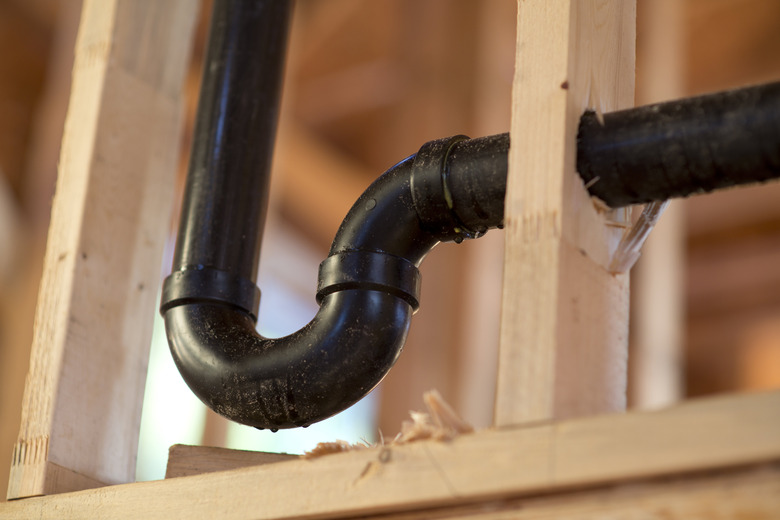How Long Must I Wait After Gluing CPVC Pipe Before Turning The Water Back On?
We may receive a commission on purchases made from links.
It's a tough material, but even CPVC needs some TLC from time to time. Pipes that have been recently repaired and glued together correctly are immediately strong. However, filling the pipes with water right after setting the solvent-weld CPVC cement can unravel all of your hard work.
Tip
Cure times for CPVC solvent cement vary widely, depending on pipe size, psi, humidity and temperature.
Working With CPVC
Working With CPVC
When working with CPVC, remove burrs and fillings that can put stress on the pipe fittings. Wipe down the interior and exterior of the pipe fittings to remove any loose dirt, dust or water. Work down a good one-third of the pipe. The pipe needs to be squeaky clean and dry so the solvent cement will set and bond correctly.
Cut CPVC pipe with a square cut to guarantee a good bond between the pipes and the solvent cement. The larger the area that the solvent can adhere to, the stronger the joint or fitting will be. A fine-toothed blade of 6 to 7 per centimeter on a miter saw, ratchet cutter or circular saw will give the best cut, according to FlowGuard Pipe & Fittings.
The solvent cement can have a strong chemical odor, and the sticky stuff can irritate sensitive skin. Open a window to ventilate the room and use a particle mask, work gloves and safety glasses as a precaution.
Using Solvent Cement
Using Solvent Cement
The solvent cement can quickly set and bond the fittings without worry of leaks. While it acts like a glue, the sticky stuff chemically fuses to the pipe and fitting using solvents and resin.
When applying the solvent, use either the swab that comes with the product or a paintbrush that is half the size of the pipe diameter to put a thick coat on the outside and a slightly thinner coating on the inside of the fitting socket.
If the pipe is larger than 2 inches, apply a second coat of cement to the pipe end. It should be a heavy application, but don't let the solvent cement puddle on the pipe and fittings.
Cure Times for CVPC Solvent
Cure Times for CVPC Solvent
The cure time depends on the pipe size, tightness of the fit, humidity and temperature. Drier environments will allow shorter drying times, but humid areas require longer wait times. Follow the recommended set times from the manufacturer of the solvent you're using.
For a 1 1/2- to 2-inch pipe with up to 160 psi, Corzan recommends allowing a cure time of 30 minutes when it's 60 to 100 degrees Fahrenheit, 45 minutes when working in 40- to 60-degree temperatures and an hour when conditions are below 40 degrees. If you're working in a humid area, add 50 percent to the cure time. Those times increase significantly with psi and the size of the pipe.
A 2 1/2- to 8-inch pipe with up to 160 psi requires a 90-minute wait time in 60- to 100-degree temperatures and 24 hours for pipes with a psi of 160 to 315. That time increases to four hours when you're working in temperatures of 40 to 60 degrees and up to three days for pipes with up to 160 psi.
